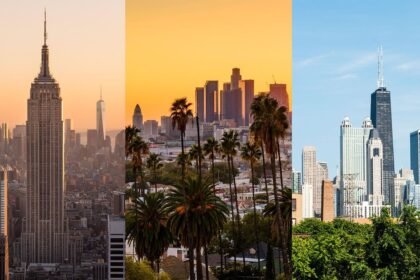What Is World Wide Web Day?
World Wide Web Day, celebrated every August 1st, is a global tribute to the revolutionary creation that changed the way we access and share information. It’s a day to acknowledge the profound influence the has had on communication, commerce, education, entertainment, and nearly every aspect of modern life.

While many people use the terms “Internet” and “World Wide Web” interchangeably, they are not the same. The Internet is a massive network of interconnected computers, while the World Wide Web is a system of linked documents and resources—primarily accessed through browsers—that operate over the Internet.
A Brief History of the Web vs. Internet
The Internet dates back to the 1960s when the ARPANET (Advanced Research Projects Agency Network) was developed in the U.S. as a military project. But it wasn’t until 1989 that the World Wide Web concept was born.
In March 1989, Sir Tim Berners-Lee, a British physicist working at CERN in Switzerland, wrote a proposal to solve communication challenges among researchers using hyperlinks.
Building the World Wide Web
By the end of 1990, Berners-Lee had invented the essential components of the modern Web:
- HTML (Hypertext Markup Language) – for creating web pages
- URL (Uniform Resource Locator) – for web addressing
- HTTP (Hypertext Transfer Protocol) – for data communication
He also built:
- The first web browser
- The first web server software
- The first web pages to describe his project
By January 1991, the first web servers outside CERN were online. SLAC (Stanford Linear Accelerator Center) hosted the first Web server in the U.S. by September of the same year.
The Early Web Era (1991–1995)
The early adopters of the World Wide Web were mainly universities and research labs. In April 1993, CERN announced that the World Wide Web software was public domain, opening the door for global adoption.

By the end of 1993, over 500 servers were operational. That same year, the Mosaic browser launched, popularizing the Web with its user-friendly interface and multimedia support. Mosaic’s development team would later contribute to the creation of Netscape Navigator, one of the first widely used commercial browsers.
Web Growth and Commercialization (1994–2000)
In 1994, Berners-Lee founded the World Wide Web Consortium (W3C) at MIT, which continues to set global Web standards.
This decade witnessed:
- The rise of Yahoo!, MTV.com, and IMDb
- Launch of Amazon and eBay
- Birth of search engines and web directories
Search technology also advanced. In 1996, RankDex introduced a page-ranking algorithm, inspiring Google’s PageRank in 1998.
The Dot-Com Boom and Bust
Between 1997–2001, a surge of tech startups transformed the Web into a commercial hub. But in 2001, the dot-com bubble burst, and many companies failed. However, major players like Amazon, eBay, and Google survived and thrived.

High-speed internet access began to spread, and platforms like Facebook, MySpace, and YouTube laid the foundation for the social web.
The Rise of Web 2.0
Web 2.0 marked a shift from passive browsing to active participation. This era focused on:
- User-generated content
- Interactive platforms
- Social networking
Popular Web 2.0 platforms include:
- Wikipedia (user-edited knowledge)
- YouTube (video sharing)
- Facebook, Twitter, Instagram (social communication)
- Blogger, WordPress (personal and professional blogs)
This participatory culture changed how people interact online, giving rise to influencers, viral media, and digital activism.
The Vision of Tim Berners-Lee
Though the Web has evolved, it still reflects Berners-Lee’s original vision—a collaborative space for people to read, write, and interact.

Web 1.0 was static and one-directional.
Web 2.0 is dynamic, interactive, and community-driven.
We are now moving toward Web 3.0—a decentralized, semantic Web focusing on privacy, AI integration, and user ownership.
Why World Wide Web Day Matters
Celebrating World Wide Web Day reminds us of how far we’ve come. Thanks to the Web:
- Communication is instant and global
- Education is more accessible
- Business can happen across borders
- Social movements spread worldwide
- Entertainment is available on-demand
- Innovation is at everyone’s fingertips
It’s also a time to reflect on digital rights, privacy, misinformation, and the need for a safe, open, and inclusive Web.
Looking Ahead: The Future of the Web
Emerging technologies are shaping the Web’s future:
- Artificial Intelligence (AI)
- Blockchain and Web3
- Augmented and Virtual Reality (AR/VR)
- Internet of Things (IoT)
These developments promise a more personalized, secure, and interactive web experience.
Happy World Wide Web Day!
As we celebrate World Wide Web Day, let’s recognize its impact and strive to keep the web open, safe, and empowering for everyone.

Whether you’re coding, browsing, streaming, sharing, or just reading a blog post—you’re part of a digital revolution that began with one idea in 1989.




